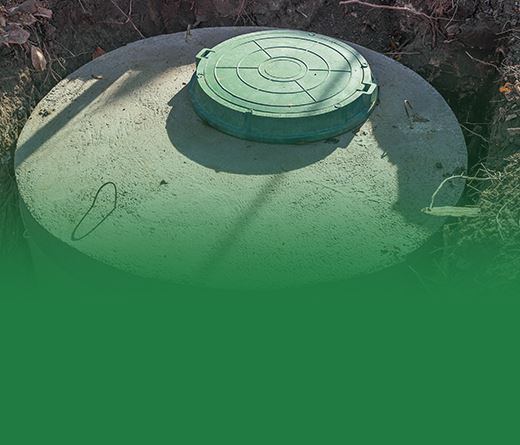
Whether you have a septic system in place or are looking to add one, having a leach field is necessary for keeping it in tip-top shape. Now you have this big plot of open land just sitting there, a space of untapped potential. Before you start daydreaming about building a garden or raising a pool, you should know that only some things can go on your leach field. Here are some do’s and don’ts of what you can put on top of a septic drain or leach field and why.
How a Septic Drain Field Works
A typical septic drain field, also known as a leach field, is a series of perforated pipes that are set in trenches and buried with aggregates and soil. Septic filters will separate solids from liquids that flow into drain fields. The soil in these fields absorbs wastewater from septic pipes into the soil. Microbes in the earth filter and cleanse the runoff before the harmful bacteria in the liquid can reach groundwater.
These microbes need oxygen to function, and compact or saturated soil will decrease the oxygen flow to the microbes. That’s why you should keep excessive weight and traffic off the drain field, as well as excessive moisture. It’s best to design your landscape so the runoff from your roof, driveway, or sprinklers stays over ten feet away from the field. Though it requires some strategic thinking, there are several benefits to landscaping your leach field. Putting something on top can mitigate erosion-—you want about 1-2 feet of soil over your pipes at all times. The right plants can optimize oxygen for the microbes in the soil. And other items can go on top of the field too so it doesn’t obviously look like a drain field.
Plants: Do’s and Don’ts
The best plants you can put on top of a septic drain or leach field are shallow-rooted herbaceous plants. These include perennials, bulbs, turf-grass, weeds, groundcovers, and more. A few examples are holly shrubs, boxwood shrubs, azalea shrubs, hollyhocks, wild violets, and spring bulbs.
Trees can be tricky as most tree roots grow too deep underground and can compromise the septic pipes or compress the oxygen levels of the soil. There are some shallow-root trees like dogwood and cherry that you can plant about 10-20 feet away from your septic field. It’s best to install a root barrier with any trees to keep them away from your pipes.
Steer clear of willow shrubs, aspen trees, blue mist spirea, and edible vegetable plants. While the nice big plot may look like a nice place for a raised garden, the harmful bacteria from the wastewater could infect your plants. And raised gardens carry too much weight, which could crush your septic pipes.
Structures: Do’s and Don’ts
The weight of most structures makes it hard for you to put them on top of a septic drain or leach field. Tennis courts, basketball courts, and pools all require a strong foundation that a drain field can’t support. However, there are a few light things that may work.
If you own a furry friend, try open-air kennels. These kennels are in a fenced area where your dog can run freely. But the kennel can’t have a roof or any type of floor that would sit on top of the grass.
Lightweight swing sets may also work. Kids and pets can run over the ground without any issues—the wastewater is under the soil after all, not on top of it. These types of structures usually only support kids under the age of 10 since they are so small and lightweight. Just make sure it doesn’t dig into the ground or have any broad-roofed areas that would block the sun. Larger structures would put too much pressure on the field.
Temporary badminton and volleyball courts should also be fine. Two posts correctly nailed in the ground for a net shouldn’t hurt your pipes. Just keep the grass untouched and use chalk or a rope for the boundaries. But only let four people or so play at a time. 12 people on your field at once might be too much weight. You can also check the EPA’s website for more guidelines.
Get Set Up with Wind River Environmental
Have more questions about what you can put on top of your septic drain or leech field? Or maybe you’re looking to install one and want to get it right the first time? Wind River Environmental has the expert equipment, staff, and customer service you need. Get in touch with us today to get started!

